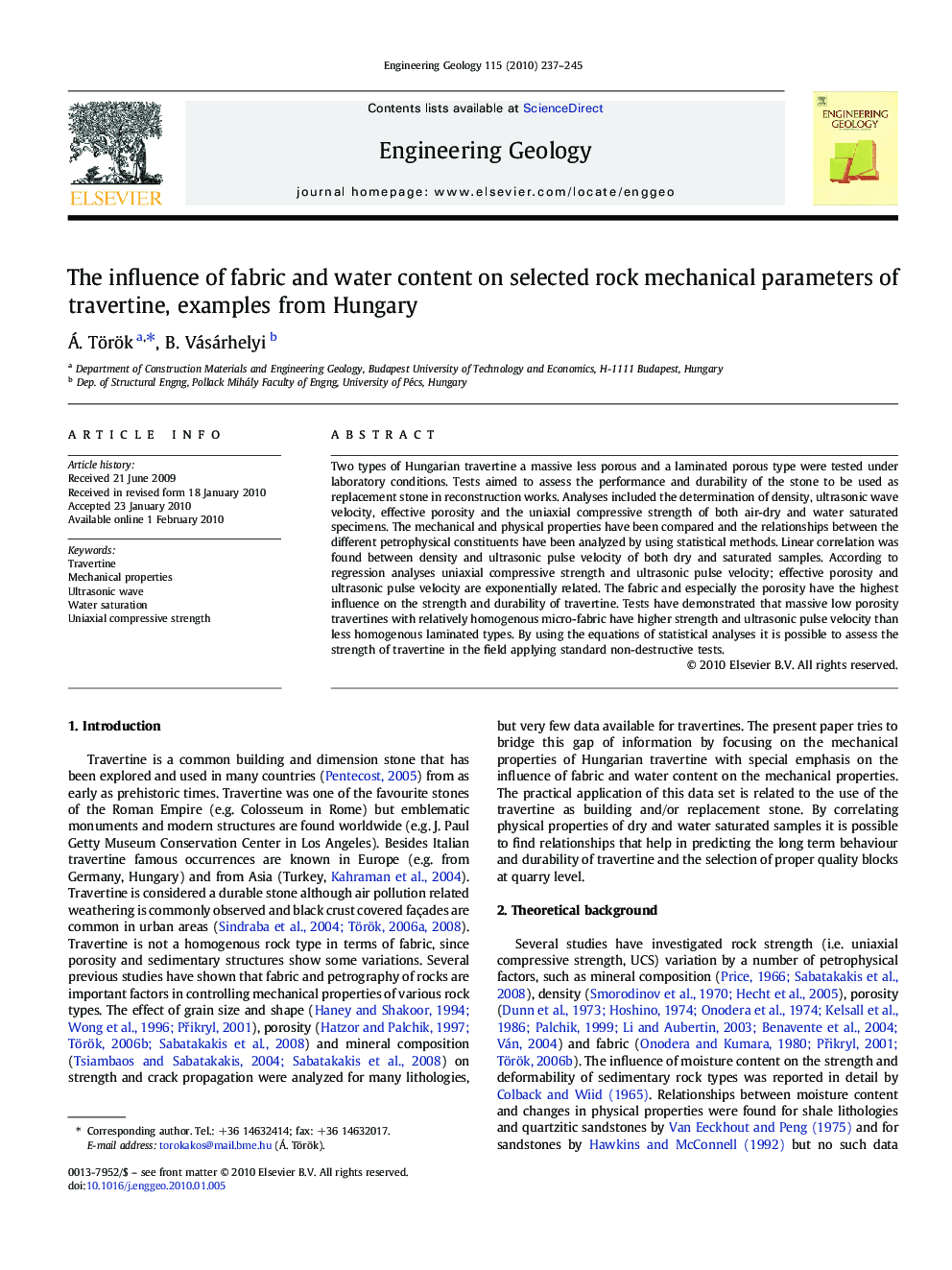| Article ID | Journal | Published Year | Pages | File Type |
|---|---|---|---|---|
| 4744538 | Engineering Geology | 2010 | 9 Pages |
Two types of Hungarian travertine a massive less porous and a laminated porous type were tested under laboratory conditions. Tests aimed to assess the performance and durability of the stone to be used as replacement stone in reconstruction works. Analyses included the determination of density, ultrasonic wave velocity, effective porosity and the uniaxial compressive strength of both air-dry and water saturated specimens. The mechanical and physical properties have been compared and the relationships between the different petrophysical constituents have been analyzed by using statistical methods. Linear correlation was found between density and ultrasonic pulse velocity of both dry and saturated samples. According to regression analyses uniaxial compressive strength and ultrasonic pulse velocity; effective porosity and ultrasonic pulse velocity are exponentially related. The fabric and especially the porosity have the highest influence on the strength and durability of travertine. Tests have demonstrated that massive low porosity travertines with relatively homogenous micro-fabric have higher strength and ultrasonic pulse velocity than less homogenous laminated types. By using the equations of statistical analyses it is possible to assess the strength of travertine in the field applying standard non-destructive tests.
